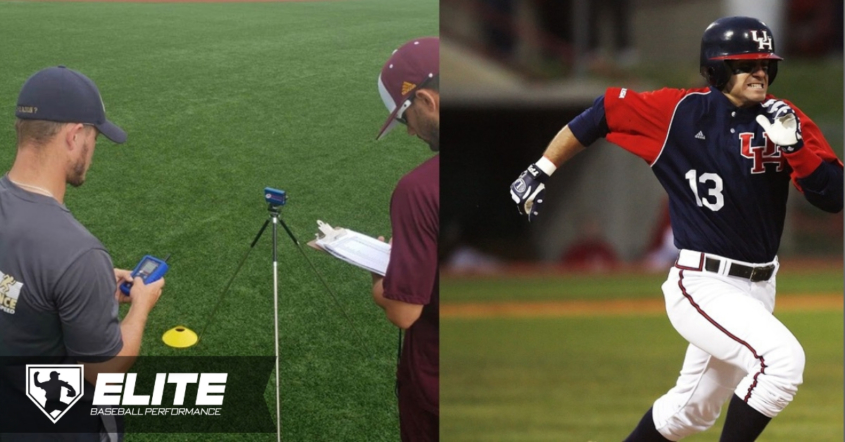The Baseball Recruiting Process is Failing Us
In the early 2000’s TV series “Who’s Line Is It Anyway” Drew Carey used to open every show by saying, “a show where everything is made up and the points don’t matter.”
Drew Carey’s repetitive opening line could be applied to much of baseball’s recruiting and player development landscape today as majority of it simply doesn’t matter. The structure of the seasonal baseball schedule from youth to college is broken.
Money has been a driving factor in year-round play and “elite” travel teams where winning is placed at the highest importance. Many teams are marketing “developmental programs” where they play 5 plus showcase events through the course of a season.
Though these programs are marketed as developmental, it is the last point of focus for the coach or organization.
Showcases, invite-only tryouts, all-stars, All-American games and rankings are all designed as incentive based reasons to pay more money for a better chance at getting recognized as elite.
In some cases, these opportunities can be useful but majority of the time just as Drew Carey used to state, “everything is made up and the points don’t matter.”
It Starts at the Youth Level
Athletes at the youth level today are simply playing too much. It happens from a combination of parents’ desires for their kids to be on elite teams and teams desiring to grow profits or build into organizations with year-round tournament play.
Individuals, leagues, organizations and cities are profiting off the high volume of teams playing in these events, so more are hosted.
Special events are designed to sound like they are more elite such as “All-American games, invitationals, select tournaments or teams… etc.”
These are simply another opportunity to continue to generate revenue for the event hosts and allow the parent or player to feel as if they are continuing in the right direction for future success of the athlete.
Future success of the athlete at the youth level though is built around the development of skill and overall athleticism, not the number of trophies held on a mantle.
As the athlete matures and the lack of focus on skill development continues, many athletes find themselves injured or behind the curve in the recruiting process to reach the next level.
Natural maturity with proper focus of skill development can catapult an athlete’s career once both have been given time to work together. Often, these will be most noticeable within the early years of high school.
Showcase/Tournament Marketing
With a continually growing competitive recruiting circuit, college coaches are competing for younger and younger talent. Freshmen in high school for most college coaches are the youngest to receive notice.
Showcases are a place in which an athlete with adequate talent can “show off”. Tournament and showcase organizations claiming you can be seen at events are not lying. College coaches do attend events nation-wide to find unknown players.
However, what these events are not advertising is what it actually takes to receive the interest of a college coach.
For pitchers, it is clear that you must first pass the radar gun test. When a college coach sees a player who may be a “prospect”, the first thing they do is pull out a radar gun to determine if they fit the velocity they look for at the level of their college.
D1 schools look for 90+ mph, D2 schools look for 85+ mph and D3, NAIA will look for 80+ mph. Junior colleges will differ by region.
For example, Florida junior colleges will look for guys who can compete at the D1 level as most of the major D1 transfers will end up at Florida JUCO’s. This is different in northern JUCO’s though where 80 to 85mph may allow you to receive a scholarship.
The First Step in Recruiting
The first step in setting a plan to get recruited is determining your current skill level as a player and deciding if your talent level lines up with the caliber school you are looking to be recruited by.
If you are shooting for an SEC or ACC school at the D1 level then you are going to need to be very refined as a pitcher to catch the interest of one of those coaches.
Before wasting your money to attend events in which you hope those schools will be attending, it is best to decide if you are currently someone that coach may be interested in.
First impressions can be everything to many recruiters. Just like a job interview when you first present your skills you want to provide a “wow” factor.
If you are hoping to attend a high level D1 school and you showcase yourself for that coach throwing 75 mph you are likely going to be passed over or crossed off their list.
It is better to skip these events and spend this time developing your skills and developing yourself physically. Once you have developed the skills needed to provide the “wow” factor for a coach at the level you desire you can take these skills and then begin to showcase them effectively.
Showcases Are Not the Only Way to be Recruited
Showcases today look like a herd of livestock. Roaming around a field in the masses, numbered and asked to perform specific tasks in which they are rated for their performance.
Showcases can be an opportunity but in today’s world there are an abundance of opportunities in which a player can drive his name to the top of a coaches recruiting board.
From attending specific school camps (as mentioned previously) to sending schools video of your skills, there are ways aside from showcases in which a player can be recruited.
We recently had a player who added a coach on twitter, messaged him, got a call and received a scholarship offer. You do not have to pay thousands of dollars for an opportunity to receive a scholarship. You simply must understand the level at which your talent aligns and be consistent in your approach to show a school you fit their needs.
To get the most out of the recruiting process, here’s how the baseball community can offer guidance:
- Make your time as a youth purposeful in skill and physical development.
- Understand what coaches look for at each level and do not buy into the event marketing.
- Make your first step as a player to reach the needed skill level of your desired school.
- Avoid getting lost in the shuffle of showcases by being practical in your approach with recruitment.
Casey Mulholland
Latest posts by Casey Mulholland (see all)
- The Baseball Recruiting Process is Failing Us - April 23, 2019





Leave a Reply
Want to join the discussion?Feel free to contribute!